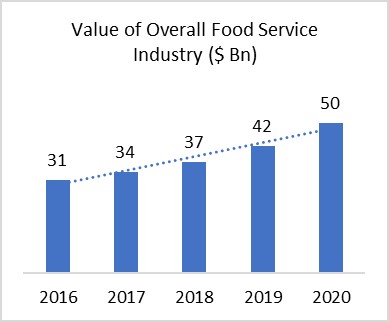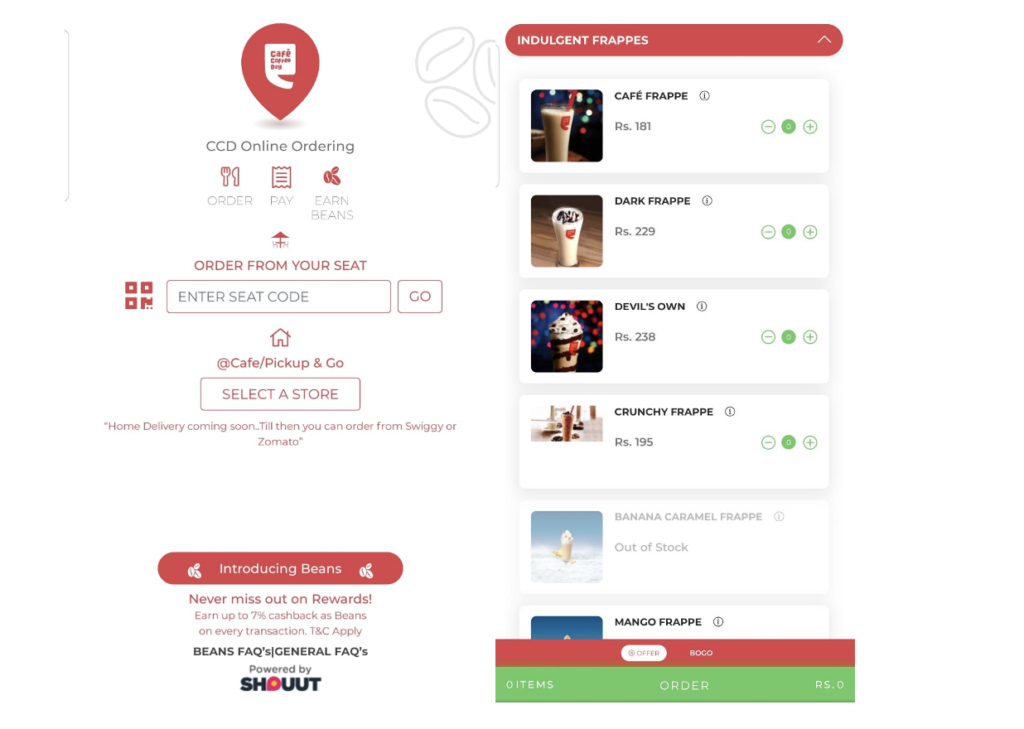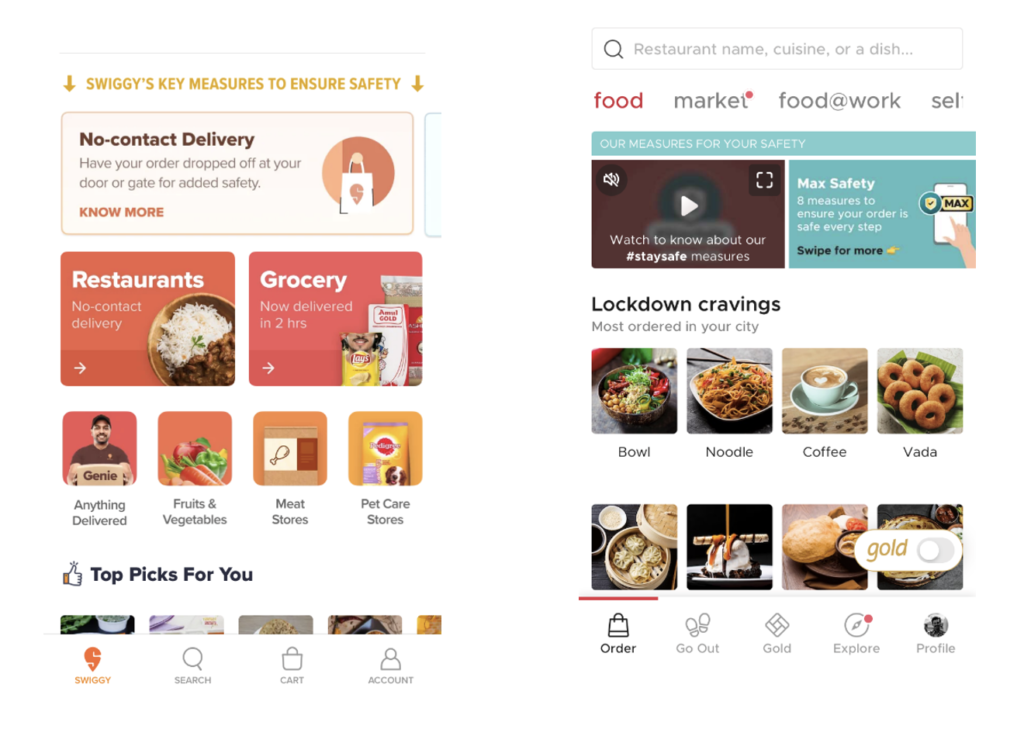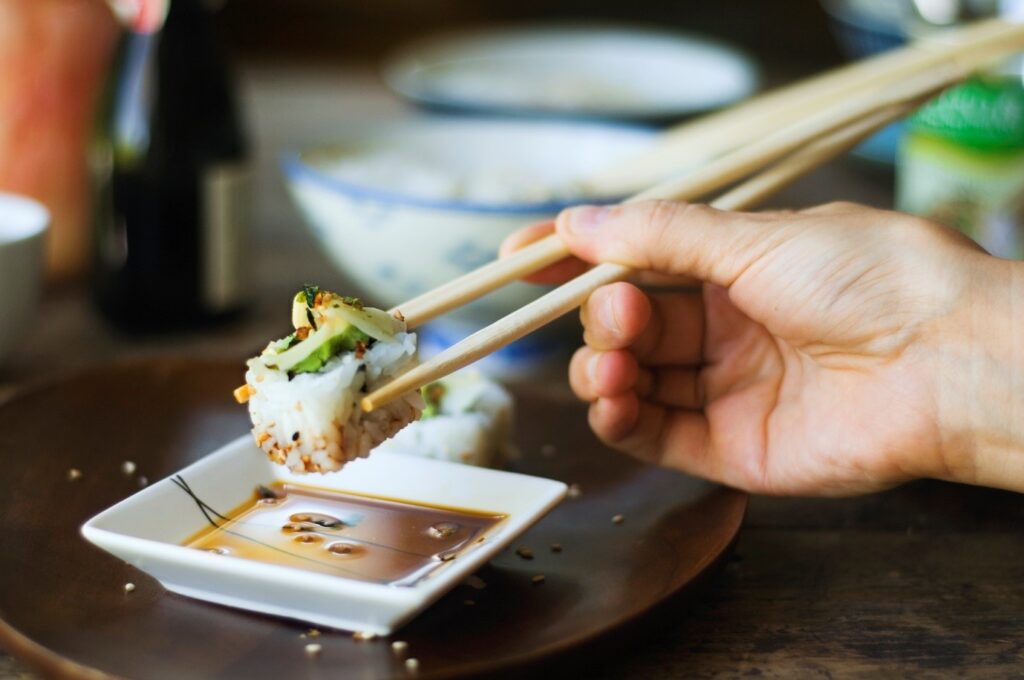Executive Summary
The coronavirus pandemic and the subsequent lockdown has crippled the foodservice industry. With operational constraints and an increase in customer apprehensions about ‘outside food’, the industry has to innovate to survive the crisis. In the recovery phase, the focus must be on sustaining business operations, operational solvency, and curating customer experiences.
In this article, Qwixpert explores some of the digital and on-ground interventions adopted by restaurants. They are offering safe dining experiences through contactless dining, social distancing at premises, and unmanned delivery kiosks. Innovations such as automation in food preparation, dark kitchens, and using online delivery channels can reduce cost burdens. Engaging with customers through social media can abate fears and influence them to eat out again. The industry is set to transform, and the changes will outlast the pandemic.
Background
The Foodservice industry is amongst the worst-hit sectors due to the Novel Coronavirus. Apart from being completely shut during the lockdown period, diner’s apprehension about consuming non-home cooked food and the fear of virus transmission in public spaces have continued to keep customer footfalls low even during the unlock phases. This drop in demand, coupled with a shortage of staff and disruptions in the supply chain, has led to an estimated $9 billion loss. Thus, bringing into question the industry’s sustenance in a post-COVID-19 world. As the foodservice industry opens up and slowly moves forward, we have analysed how their operating models have evolved to keep pace with the demands of the time.
A $50 Billion industry with positively aligned macroeconomic indicators until the COVID-19 outbreak
The Indian market is valued at $50 Billion. The organised sector contributing to 30-35%, comprises of Casual Dining, Quick Service Restaurants, Bars and Pubs, and the Unorganised sector (65-70%) are made up of Dhabas, Roadside eateries, Sweet shops, and other smaller establishments.

The Foodservice industry has grown at ~13% CAGR (2016-2020). The growth was driven by increased frequency of eating out (6.6 times a month) and more spend on restaurants monthly (Average: Rs 2500 a month)
Online delivery, one of the most significant disruptions in the Food Service industry over the past decade, accounts for $1.54 Billion with a 3% share in the overall foodservice industry. It has been growing at 17.5% CAGR due to an increase in discretionary spending power, internet penetration, and a rise in the millennial population.
This period of strong growth has been interrupted by the pandemic. In the “Unlock” phases post the lockdown, restaurants were estimated to be operating at ~50% of their pre-COVID levels resulting in negative operating margins. The industry is expected to go through a long and slow recovery phase. New norms and practices have been implemented to meet Government stipulations and assuage customer concerns. We expand on the most visible and the not so visible ones below.
1. Providing a safe dining experience is the topmost priority
State SOP’s mandate thermal screening of all diners at the entrance, use of facemasks by employees and, in several instances, has capped seating capacity to 50% of pre-coronavirus levels. In several outlets, disposable cutlery and paper napkins are used, the tables and chairs are sanitised before and after use, and waiters use gloves and face shields while interacting with the customers. In June, the SOPs for restaurants in Chennai included food-bearers being mandated to wash hands every 30 minutes once.
Restaurants are redesigning their premise to make provisions for social distancing. Restaurants have spaced out the furniture and installed plastic curtains to create make-shift booths. As research has proved that the virus can transmit quickly in crowded indoor spaces, few restaurants are creatively using parking spaces to develop outdoor seating, offer drive-through take away or provide contactless drive-in restaurant service. In a recent survey conducted at Chennai, 61% of the respondents preferred to wait for a cure before venturing out for dinner; 73% preferred a drive-in option.
II. Adopting digital interventions to reduce contact with customers and dishes
Across the food preparation process, multiple people (chef, waiter, and other staff) touch the food increasing the chances of virus transmission. Automation in food preparation and delivery can reduce contact and abate fear – Robochef, a restaurant in Chennai, uses an automated kitchen where 600+ pre-programmed dishes can be prepared hygienically with 60% less workforce. Restaurants also use vending machines to offer contactless dine-in and takeaway experience. For instance, Daalchini has smart kiosks in Delhi that provide home-cooked food. The customer can discover the nearby Daalchini kiosks using an app, browse through the menu, and place orders digitally. They can visit the unmanned kiosk within half an hour to pick up their food.

Restaurants have introduced QR code-based menus. Guests now scan the code to access the menu. Online ordering and payment practices are increasing at these times. Café coffee day has managed to open 60% of its stores post-lockdown by offering contactless dining through a web-based platform. Guests order from their seats by entering the seat code (pasted on the table), pay online, and get their food served at the table. The coffee chain wants to harness the data from this portal to understand the need of the customer and optimise a personalised experience for them.
III. Catering to online orders and developing lean operations is the new normal
Restaurants may no longer be able to sustain without delivery capability. More and more customers are seeking to order online, and the reliance on delivery channels in the post-COVID world is bound to increase. Restaurants can separate menus – Delivery & Dine-in with a focus on improved packaging quality and have a separate order pick-up zone. Food delivery companies, as well as restaurants, will focus more on creating occasions for customers to order-in—Eg: Swiggy’s ads on delivering even a single piece of dessert to complete a meal. Pubs in the UK have started organizing online pub quizzes and allowing customers to order food and drinks to recreate the dine-in mood.
Restaurants are evolving their business model and setting up Dark kitchens that offer delivery only services and cater to the fast-growing consumer demand through food apps. Faasos, a pioneer in Indian cloud kitchens, was able to grow at 120% and expand to ~1,000 outlets in two years. Zomato and Swiggy have funded and developed ~1,600 cloud kitchens across India, which work on a revenue-sharing basis. These kitchens have been set up in partnership with traditional restaurants like Haldirams, Keventers, and Saravana Bhawan or launched under private brands like The Bowl Company.
While it is reported that Swiggy recently scaled down their dark kitchen business due to massive demand shock, we expect the cloud kitchen model to see more and more takers in the future. They are a safer alternative as customer contact is reduced, and social distancing can be practiced. During the lockdown, most restaurants have operated as Dark Kitchens and have continued even during the recovery phase that is a more efficient model. These kitchens reduce rental costs from ~12-20% to 6-9% of revenues.
IV. Investing in messaging around safety to dispel customer apprehensions and driving customer loyalty through social media campaigns
Marketing during pre-COVID times focused on attracting customers with offers, food choices, and the dining out experience, it has now pivoted more towards safe practice awareness as customer apprehension is at an all-time high. Questions abound on whether restaurants will continue to be looked at as social places for human interaction or functional ones to grab a quick meal in the event of necessity.
Personalised recommendations, loyalty programs, and discounts on food delivery apps along with tags such as ‘Max Safety’, ‘Best Safety’, and ‘Contactless Delivery’ are used to reassure customers who are looking to order-in.

Discounts and offers are still as high (if not more than pre-COVID). Restaurants that deregistered last year following a disagreement with these app-based delivery platforms are returning.
Restaurants are innovatively using social media to engage customers by offering online cooking classes with chefs, live streaming baking sessions, and organising wine delivery & tasting sessions over zoom calls.
V. Focusing on sanitation in procurement
Vegetable markets are being and will be eyed suspiciously by restaurants going forward. A preference for organised players who can be trusted to take social distancing measures, frequent sanitation of delivery trucks, contactless delivery, and online payments will rise. E-Procurement, using blockchain technology, is increasing transparency in the supply chain and makes it easier to enforce hygienic practices. The cleanliness of the ingredients is also a point of concern. Most state SOP’s for restaurants mandates the use of 50 PPM Chlorine to clean vegetables, dal, and rice. Zomato Hyperpure, Big Basket HoReCa, WayCool, and Dunzo are aggressively growing in this segment and cater to over ~10,000 partner restaurants.
Summary
In this race to recovery, organizations are leaving no stone unturned to rejuvenate operations, innovatively serve customers, and minimize the cost of operations. Sanitation of dining spaces, automation in food procurement, preparation and delivery, cloud kitchens, social media led long term customer engagement, and creating at-home dining occasions are where we are headed. As restaurants “reconnect” with their customers, from a safe distance, technology and efficiency are the pillars upon which recovery is being fashioned.
References
https://www.restaurant.org/Articles/News/Study-details-impact-of-coronavirus-on-restaurants
https://www.zomato.com/blog/hyperpure
http://www.careratings.com/upload/NewsFiles/Studies/Restaurants%20%20QSRs%20May%202019.pdf
https://medium.com/collectivfood/the-b2b-food-supply-chain-is-ready-for-disruption-4fd3ace8495
http://ficci.in/spdocument/23056/foodzania-release2018.pdf
http://ficci.in/spdocument/23056/foodzania-release2018.pdf
https://thelogicalindian.com/news/indian-household-bengaluru/
https://d2w1ef2ao9g8r9.cloudfront.net/resource-downloads/2019-Restaurant-Success-Report.pdf
https://www.deccanchronicle.com/business/companies/140119/qsrs-tweak-strategy-to-fend-off-swiggy-zomato.htmlhttps://redseer.com/newsletters/food-tech-market-updates-june18/


